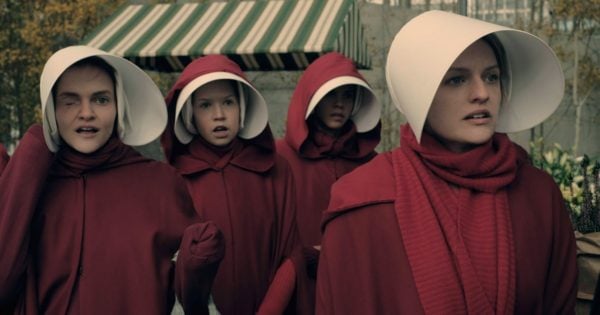The Handmaid’s Tale is being called the most important TV series of the year and it’s not hard to see why.
Adapted from Margaret Atwood’s 1985 dystopian novel of the same name, it’s the story of ‘Offred’, a ‘Handmaid’ living in the Republic of Gilead where women have had their rights and power totally stripped and are now reduced to reproductive vessels.
It’s dark, it’s harrowing and most scarily of all, tells of events not entirely unthinkable.
Listen: The Binge host Laura Brodnik explains why The Handmaid’s Tale is the most important TV show of 2017.
The series dropped on SBS On Demand last week and already has Australian viewers transfixed (and horrified).
However, like all slick TV productions nowawdays, the devil really is in the details. No matter how far into the show you are, here are the six small but important details you might have missed that say so much.
1. Why the Handmaids wear red.
The Handmaids are fertile women given to wealthy and powerful families to procreate when the wives cannot.
They wear sexless floor length gowns, “in the colour of blood, which defines us.”. As well as representing fertility and the womb, it’s also the colour of adultery, which is technically what the Handmaid’s role in society entails.
Many also have what the regimen considered “scandalous” pasts, including divorce, rape, abortion or homosexuality.






Top Comments
we are still asleep and heading down this road NOW - some women already live this life in both western and non-western countries
Oh come on... events not entirely unthinkable??? Don't be so sensationalist! If u think people (yew men included) would accept this scenario unfolding in real life in a place like Australia then you have lost touch with reality!!
Thats probably what people said in Weimar Germany or Czarist Russia or Iran under the Shah or Afghanistan pre-Taliban etc etc etc
Shouldn't be hard to find proof of that then....